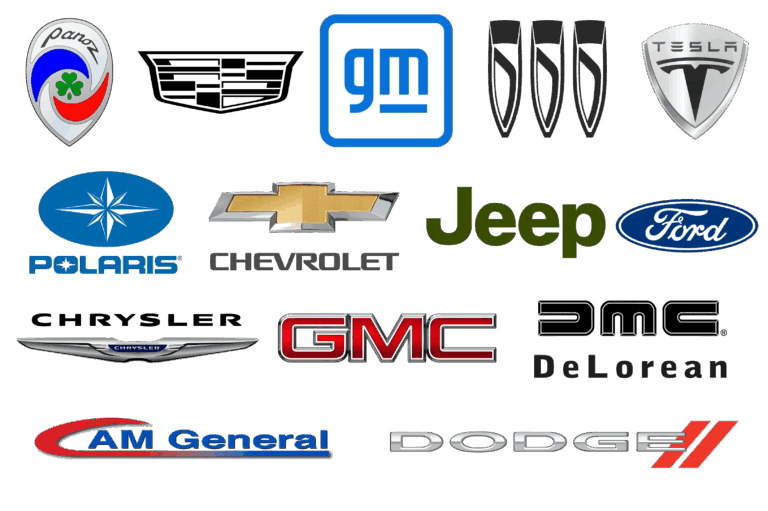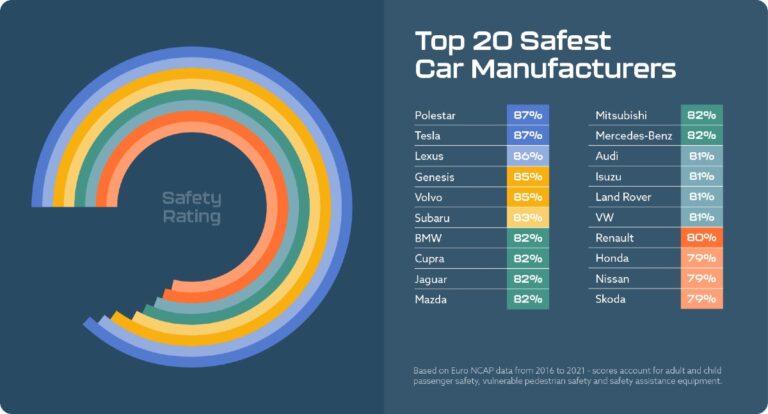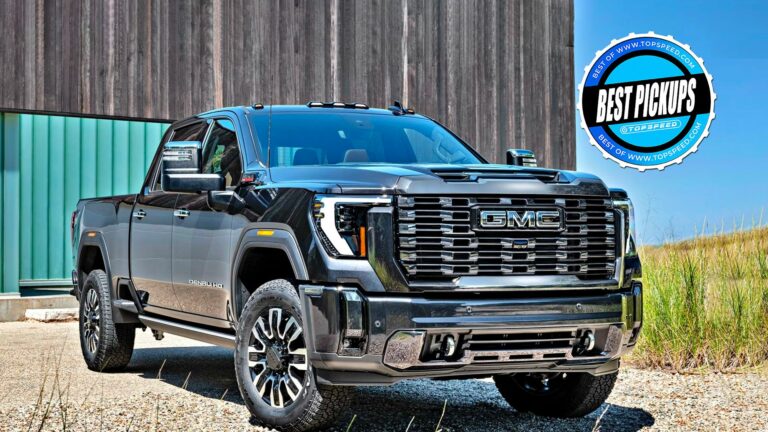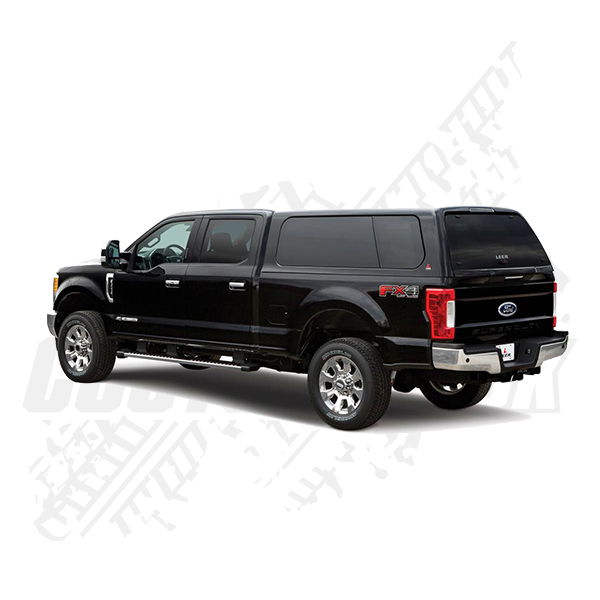Name Of Truck Parts: A Comprehensive Guide to Your Vehicle’s Anatomy
Name Of Truck Parts: A Comprehensive Guide to Your Vehicle’s Anatomy cars.truckstrend.com
Trucks are marvels of engineering, designed for power, durability, and utility. Whether you own a light-duty pickup, a medium-duty commercial vehicle, or a heavy-duty semi-truck, understanding the various components that make up these formidable machines is crucial. Knowing the "name of truck parts" isn’t just for mechanics; it empowers owners and operators to make informed decisions about maintenance, repairs, upgrades, and even safe operation. This comprehensive guide will demystify the complex world of truck parts, breaking down their functions, importance, and common considerations.
The Importance of Knowing Your Truck’s Components
Name Of Truck Parts: A Comprehensive Guide to Your Vehicle’s Anatomy
Every part of a truck plays a vital role in its overall performance, safety, and longevity. From the smallest sensor to the largest engine block, each component contributes to the vehicle’s ability to haul heavy loads, navigate diverse terrains, and transport goods efficiently. A working knowledge of these parts allows you to:
- Identify Issues Early: Recognize symptoms of wear or failure, preventing minor problems from escalating into costly breakdowns.
- Communicate Effectively: Articulate problems accurately to mechanics, leading to quicker diagnoses and repairs.
- Make Informed Decisions: Choose the right parts for replacements, considering quality, compatibility, and cost.
- Perform Basic Maintenance: Understand what needs routine inspection and servicing, extending your truck’s lifespan.
- Enhance Safety: Ensure critical components like brakes and steering are in optimal condition, protecting yourself and others on the road.

Let’s delve into the major systems and their essential components that collectively form a truck.
I. The Heart of the Beast: Engine & Powertrain Components
The engine and powertrain system are the core of any truck, responsible for generating and delivering power to the wheels.
A. Engine Components: The Powerhouse
The engine is where fuel is converted into mechanical energy.

- Engine Block: The main structure housing the cylinders and other components.
- Cylinders: Chambers where combustion occurs.
- Pistons: Move up and down within the cylinders, driven by combustion.
- Crankshaft: Converts the linear motion of pistons into rotational motion.
- Camshaft: Controls the opening and closing of engine valves.
- Valves (Intake & Exhaust): Regulate the flow of air-fuel mixture into and exhaust gases out of the cylinders.
- Turbocharger/Supercharger: Forces more air into the engine for increased power.
- Fuel Injectors: Atomize and spray fuel into the combustion chambers.
- Radiator: Dissipates heat from the engine coolant.
- Alternator: Generates electrical power to run the truck’s electrical systems and recharge the battery.
- Starter Motor: Engages the engine to start it.
- Water Pump: Circulates coolant through the engine and radiator.
- Oil Pump: Circulates engine oil for lubrication and cooling.
- Glow Plugs (Diesel): Heat the combustion chamber to aid cold starts in diesel engines.
- Spark Plugs (Gasoline): Ignite the air-fuel mixture in gasoline engines.

B. Powertrain Components: Transmitting Power
These parts transmit power from the engine to the drive wheels.
- Transmission (Gearbox): Changes engine speed and torque to the drive wheels, allowing the truck to move at different speeds and handle varying loads. Can be manual or automatic.
- Clutch (Manual Transmission): Disengages and engages the engine from the transmission for gear changes.
- Driveshaft (Propeller Shaft): Connects the transmission to the differential, transferring rotational power.
- Differential: Allows the drive wheels to rotate at different speeds when turning.
- Axles: Shafts that connect the wheels to the differential, supporting the vehicle’s weight and transmitting power.
II. The Backbone and Cushion: Chassis & Suspension System
The chassis provides the structural support, while the suspension system ensures a smooth ride and maintains tire contact with the road.
- Frame: The fundamental structural component of the truck, supporting all other systems.
- Leaf Springs: Common in heavy trucks, these are layered steel strips that flex to absorb shocks.
- Coil Springs: Spiraled metal coils that absorb impacts.
- Shock Absorbers (Dampers): Control spring oscillations and dampen vibrations.
- Air Suspension: Uses air bellows instead of traditional springs, offering adjustable ride height and superior ride comfort, especially for sensitive cargo.
- Control Arms: Connect the wheels to the frame, allowing for vertical movement while maintaining alignment.
- Ball Joints: Pivoting connections that allow the suspension and steering to move.
- Tie Rods: Connect the steering gear to the steering knuckle, translating steering input to the wheels.
- Kingpins (Heavy-Duty): Large pins connecting the steering knuckle to the axle beam in solid front axles.
III. Stopping Power: Braking System
Crucial for safety, the braking system brings the massive weight of a truck to a halt.
- Brake Pads/Linings: Friction material that presses against the rotors/drums.
- Brake Rotors (Discs): Rotating metal discs that brake pads clamp onto.
- Brake Drums: Cylindrical components that brake shoes press against.
- Calipers: Houses the brake pads and pistons, squeezing pads against rotors.
- Brake Lines (Hydraulic/Air): Carry fluid or air pressure to activate the brakes.
- Master Cylinder (Hydraulic): Converts pedal pressure into hydraulic pressure.
- ABS Module (Anti-lock Braking System): Prevents wheel lock-up during hard braking.
- Air Compressor (Air Brakes): Generates compressed air for air brake systems.
- Air Tanks/Reservoirs (Air Brakes): Store compressed air.
- Brake Chambers (Air Brakes): Convert air pressure into mechanical force to apply brakes.
- Slack Adjusters (Air Brakes): Automatically adjust brake lining clearance.
IV. Guiding the Way: Steering System
The steering system allows the driver to control the direction of the truck.
- Steering Wheel: Driver’s input device.
- Steering Column: Connects the steering wheel to the steering gear.
- Steering Gearbox (Recirculating Ball) / Rack and Pinion: Translates rotational steering input into linear motion.
- Power Steering Pump: Provides hydraulic assistance to reduce steering effort.
- Pitman Arm, Drag Link, Tie Rod Ends: Components that transfer motion from the steering gear to the wheels.
V. The Nerves and Senses: Electrical System
The electrical system powers everything from ignition to lighting and onboard electronics.
- Battery: Stores electrical energy for starting and powering accessories.
- Alternator: Recharges the battery and powers the electrical system when the engine is running.
- Starter Motor: Engages the engine to start it.
- Wiring Harness: Bundles of wires that transmit electrical signals and power throughout the truck.
- Lights (Headlights, Taillights, Marker Lights, Turn Signals): Essential for visibility and signaling.
- Fuses & Relays: Protect circuits and control electrical flow.
- ECU (Engine Control Unit) / ECM (Engine Control Module): The "brain" of the engine, managing fuel injection, ignition, and other vital functions.
- Sensors (Oxygen, MAP, Crankshaft Position, ABS Wheel Speed, etc.): Provide data to the ECU about various operating conditions.
VI. The Shell and Comfort: Body & Cab Components
These parts form the exterior and interior of the truck, providing protection and driver comfort.
- Cab Structure: The driver’s compartment.
- Doors: Entry and exit points.
- Hood: Covers the engine compartment.
- Fenders: Protect the tires and body from road debris.
- Grille: Front opening for airflow to the radiator.
- Windshield & Windows: Provide visibility and enclose the cab.
- Mirrors (Side, Rearview): Essential for visibility around the vehicle.
- Seats: Driver and passenger seating.
- Dashboard/Instrument Panel: Houses gauges, controls, and infotainment systems.
- HVAC System (Heating, Ventilation, Air Conditioning): Maintains cab temperature.
VII. The Contact Points: Wheels & Tires
The only parts of the truck that touch the road, critical for traction, stability, and handling.
- Rims/Wheels: The metal structure onto which tires are mounted.
- Tires: Rubber components providing grip, cushioning, and supporting the vehicle’s weight. Different types exist (highway, all-terrain, mud, winter).
- Lug Nuts: Secure the wheels to the axle studs.
- Valve Stems: Allow for tire inflation and deflation.
VIII. Managing Emissions: Exhaust System
The exhaust system safely channels spent gases away from the engine and reduces harmful emissions and noise.
- Exhaust Manifold: Collects exhaust gases from engine cylinders.
- Catalytic Converter: Reduces harmful pollutants in exhaust gases.
- Muffler: Reduces exhaust noise.
- Tailpipe: Directs exhaust gases away from the vehicle.
- DPF (Diesel Particulate Filter) (Diesel): Traps soot particles from diesel exhaust.
- SCR (Selective Catalytic Reduction) (Diesel): Uses Diesel Exhaust Fluid (DEF) to convert NOx emissions into harmless nitrogen and water.
IX. Delivering the Energy: Fuel System
The fuel system stores and delivers fuel to the engine.
- Fuel Tank: Stores gasoline or diesel fuel.
- Fuel Pump: Draws fuel from the tank and sends it to the engine.
- Fuel Lines: Carry fuel throughout the system.
- Fuel Filter: Removes contaminants from the fuel before it reaches the engine.
- Fuel Injectors: (As mentioned in Engine Components) Deliver fuel into the engine.
Practical Advice for Truck Part Management
- Quality Matters: Always prioritize quality parts, whether OEM (Original Equipment Manufacturer) or reputable aftermarket brands. Cheaper, inferior parts can lead to premature failure, more frequent repairs, and even safety hazards.
- Regular Inspections: Incorporate routine visual checks of key components into your maintenance schedule. Look for leaks, cracks, corrosion, loose connections, and excessive wear.
- Follow Maintenance Schedules: Adhere to the manufacturer’s recommended service intervals for fluid changes, filter replacements, and component inspections.
- Understand Part Numbers: Familiarize yourself with your truck’s VIN (Vehicle Identification Number) and specific part numbers when ordering replacements to ensure compatibility.
- Professional Help vs. DIY: While basic tasks can be DIY, complex repairs involving critical systems (brakes, steering, engine internals) should be left to certified mechanics with specialized tools and expertise.
- Source Wisely: Purchase parts from authorized dealerships, trusted aftermarket retailers, or reputable online stores. Be wary of unusually low prices, which might indicate counterfeit or sub-standard products.
Sample Price Table for Common Truck Parts
Note: Prices are approximate and can vary significantly based on truck make/model, part brand (OEM vs. Aftermarket), retailer, region, and market conditions. This table is for illustrative purposes only.
| Part Name | Typical Range (USD) | Description | Replacement Frequency/Notes |
|---|---|---|---|
| Engine Components | |||
| Oil Filter | $10 – $40 | Filters contaminants from engine oil. | Every oil change (5,000 – 15,000 miles) |
| Air Filter | $20 – $100 | Filters air entering the engine. | 15,000 – 30,000 miles or annually, more often in dusty conditions |
| Fuel Filter | $20 – $150 | Filters contaminants from fuel. | 15,000 – 30,000 miles |
| Spark Plugs (set) | $40 – $200 | Ignite air-fuel mixture (gasoline engines). | 30,000 – 100,000 miles (depending on type) |
| Glow Plugs (set) | $100 – $300 | Aid cold starts (diesel engines). | As needed, usually when starting issues arise |
| Alternator | $200 – $800+ | Generates electricity. | 80,000 – 150,000 miles or as needed |
| Starter Motor | $150 – $600+ | Engages engine to start. | 80,000 – 150,000 miles or as needed |
| Water Pump | $80 – $400+ | Circulates coolant. | 60,000 – 100,000 miles or when leaks occur |
| Braking System | |||
| Brake Pads (axle set) | $50 – $300 | Friction material for braking. | 20,000 – 70,000 miles (depends on driving) |
| Brake Rotors (each) | $60 – $300 | Discs that pads clamp onto. | Often replaced with pads, or if warped/worn |
| Suspension | |||
| Shock Absorber (each) | $40 – $250+ | Dampens suspension oscillations. | 50,000 – 100,000 miles or when ride quality deteriorates |
| Leaf Spring (each) | $150 – $600+ | Supports weight, absorbs shocks. | As needed due to sag, breakage, or excessive wear |
| Electrical | |||
| Battery | $100 – $300+ | Provides electrical power. | 3 – 5 years |
| Headlight Assembly | $100 – $500+ | Complete headlight unit. | As needed due to damage or failure |
| Wheels & Tires | |||
| Tire (each) | $150 – $500+ | Provides traction and cushioning. | 30,000 – 80,000 miles (depends on type, use, and maintenance) |
| Exhaust System | |||
| Muffler | $80 – $400+ | Reduces exhaust noise. | As needed due to rust or damage |
Frequently Asked Questions (FAQ) about Truck Parts
Q1: What’s the difference between OEM and aftermarket truck parts?
A1: OEM (Original Equipment Manufacturer) parts are identical to the parts originally installed in your truck by the factory. They are typically higher quality, guaranteed to fit, and come with a manufacturer’s warranty, but are often more expensive. Aftermarket parts are manufactured by companies other than the original truck manufacturer. They can be more affordable and offer a wider range of options (e.g., performance upgrades), but quality can vary greatly. Always choose reputable aftermarket brands.
Q2: How often should truck parts be replaced?
A2: The replacement frequency varies greatly by part. Some, like oil filters, are replaced every oil change. Others, like brake pads, depend on driving habits. Major components like alternators or water pumps might last 80,000-150,000 miles or more. Always refer to your truck’s owner’s manual for recommended maintenance schedules and replace parts when signs of wear, malfunction, or damage appear.
Q3: How do I find the right part for my specific truck model?
A3: The most reliable way is to use your truck’s VIN (Vehicle Identification Number). This 17-character code provides precise details about your truck’s make, model, year, and specific features, allowing parts suppliers to identify the exact compatible components. You can also use the truck’s year, make, model, and engine size.
Q4: Can I use car parts on a truck?
A4: Generally, no. Trucks are designed to handle much heavier loads, higher stresses, and more demanding conditions than cars. Their components are built to be stronger, larger, and more robust. Using car parts on a truck could lead to premature failure, safety hazards, and potentially severe damage to your vehicle. Always use parts specifically designed for trucks.
Q5: What are common signs that a truck part needs replacement?
A5: Common signs include:
- Unusual Noises: Squealing (brakes, belts), grinding (brakes, transmission), clunking (suspension), knocking (engine).
- Vibrations: Steering wheel, floorboards, or entire truck vibrating.
- Warning Lights: Check Engine, ABS, Battery, or other dashboard lights.
- Leaks: Fluid puddles under the truck (oil, coolant, brake fluid, transmission fluid).
- Performance Issues: Reduced power, poor fuel economy, difficult starting, rough idling, pulling to one side.
- Visible Wear: Cracks, corrosion, excessive rust, frayed belts, bulging tires, worn tire treads.
Conclusion: Empowering Your Truck Ownership
Understanding the "name of truck parts" is more than just memorizing labels; it’s about gaining a deeper appreciation for the complex machinery that keeps our economy moving and our adventures rolling. By familiarizing yourself with the core systems and components of your truck, you empower yourself to be a more informed owner or operator. This knowledge translates directly into better maintenance practices, safer operation, reduced repair costs, and ultimately, a longer, more reliable life for your valuable asset. Keep learning, keep inspecting, and keep your truck running optimally.






